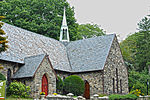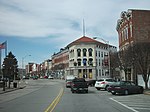Dr. Holbrook's Military School
1864 establishments in New York (state)AC with 0 elementsBoarding schools in New York (state)Briarcliff Manor, New YorkDefunct United States military academies ... and 5 more
Defunct schools in New York (state)Education in Westchester County, New YorkEducational institutions established in 1864History of New York (state)Military high schools in the United States

Dr. Holbrook's Military School was a military academy and boarding school for boys. The school was located in the town of Ossining and overlooked the Hudson River. After the 1906 annexation of Scarborough by the village of Briarcliff Manor, Holbrook's became part of the village within Ossining.The school was founded in 1864 as Mr. Tracy's School. In 1866, after David A. Holbrook purchased the school, it became known as Dr. Holbrook's Military School. The school ran until 1915, after which it was used in World War I as a field hospital and headquarters to a New York Guard regiment. From 1919 until at least 1927, the school served as the Teachers College Country Club.
Excerpt from the Wikipedia article Dr. Holbrook's Military School (License: CC BY-SA 3.0, Authors, Images).Dr. Holbrook's Military School
Argyle Place,
Geographical coordinates (GPS) Address Nearby Places Show on map
Geographical coordinates (GPS)
| Latitude | Longitude |
|---|---|
| N 41.1529 ° | E -73.8502 ° |
Address
Argyle Place 28
10510
New York, United States
Open on Google Maps









